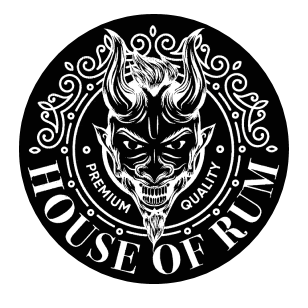
ABOUT RUM
INGREDIENTS
Rum has only one raw material: sugarcane. Yet even this single ingredient offers endless variety.
Most rums are made from molasses — a thick, dark syrup left after sugar crystals are extracted. Too dense to ferment on its own, it’s diluted with water before yeast transforms it into alcohol. Each distillery chooses its own ratios, shaping the final character of the rum.
In agricole-style rum, fresh sugarcane juice takes centre stage. Pressed directly from cane, it ferments without dilution, producing rums that are vivid and complex.
The trade-off is its perishability — juice must be fermented immediately, making it more costly and seasonal. To bridge the gap, some distillers use cane syrup (or “sugarcane honey”). It’s a concentrated form with an extended shelf life, which, like molasses, is rehydrated before fermentation.
DISTILLATION
Fermentation yields a liquid no stronger than wine or beer. Distillation elevates it into rum — and the method matters.
Pot stills, used in the production of whisky and cognac, yield bold, characterful rums in small batches. Distillers keep only the “hearts” of the run, discarding heads and tails for purity.
Many rums are double-distilled, intensifying both strength and flavour.
Column stills, by contrast, run continuously. Liquid enters midway, steam rises from below, and each tray inside the column further refines the spirit.
The result: lighter, more delicate rums.
The distiller’s choice of pot, column, or hybrid defines the rum’s style — rich and heavy, or elegant and clean.
AGEING
Fresh rum leaves the still clear, with flavour shaped only by its raw material and fermentation. But ageing in wood is where rum earns its soul.
Even white rums may spend time in oak barrels before being filtered.
For sipping rums, years in cask bring extraordinary depth. American Oak ex-Bourbon barrels are common.
Ex-Cognac, ex-Brandy, or even virgin oak introduces its own signature of vanilla, spice, fruit or smoke.
BOTTLING
Most producers blend barrels to achieve consistency or dilute their rum to 40% ABV to maximise the yield.
Many add sugar, caramel, or boisé to adjust body, flavour or colour. The result is smooth but ordinary.
House of Rum refuses to compromise.
We select the single casks that stand out. We bottle them precisely as they are: single producer, single vintage, single cask.
Always cask strength — whether 55.5% or 64.3% — with nothing added and nothing taken away.
It means fewer bottles, but vastly greater character.
Some drinkers enjoy our rums neat, others add a drop of water to open the flavours, as they might with a fine single malt.
Either way, every sip carries the integrity of rum in its purest form.




